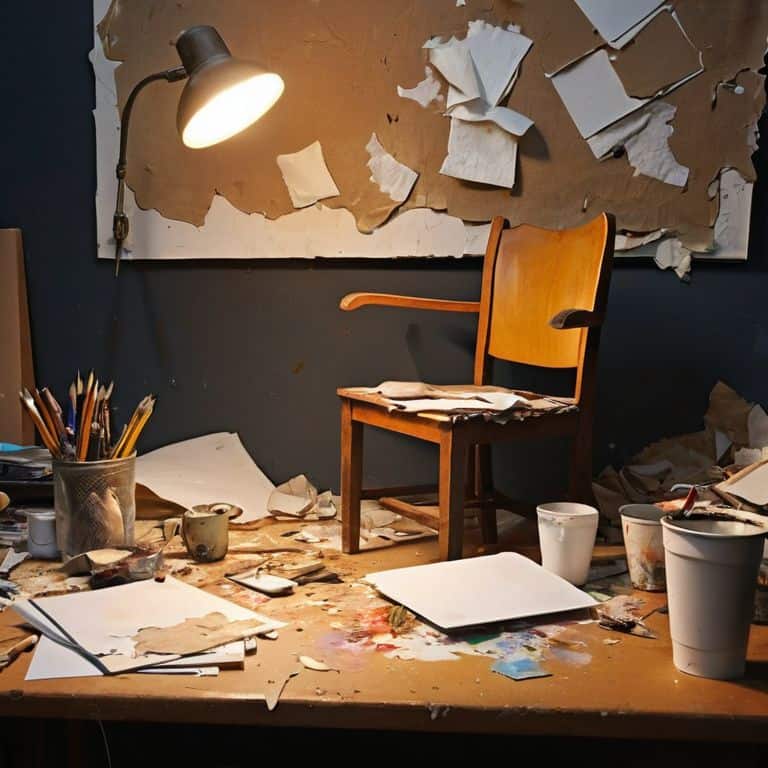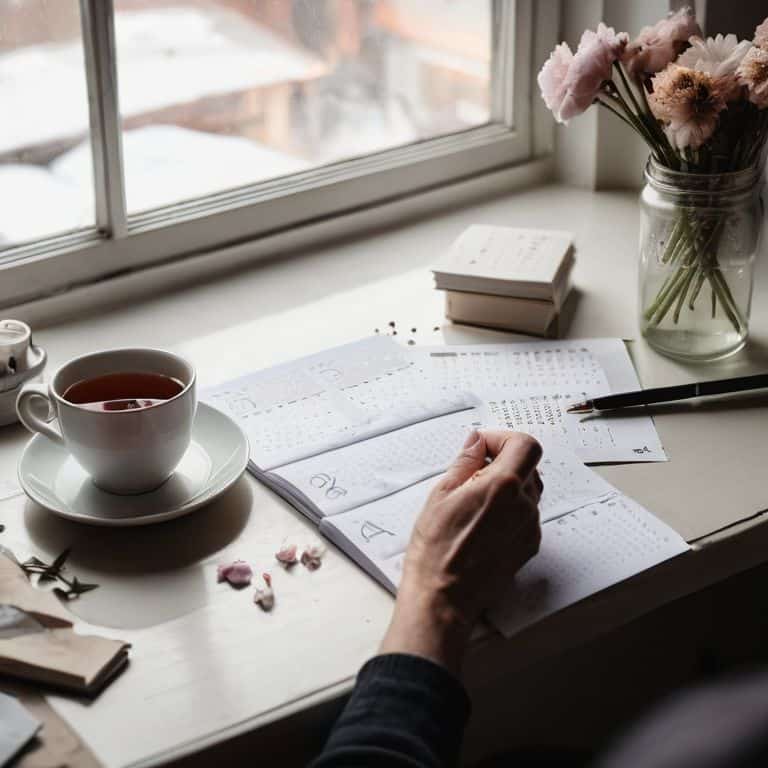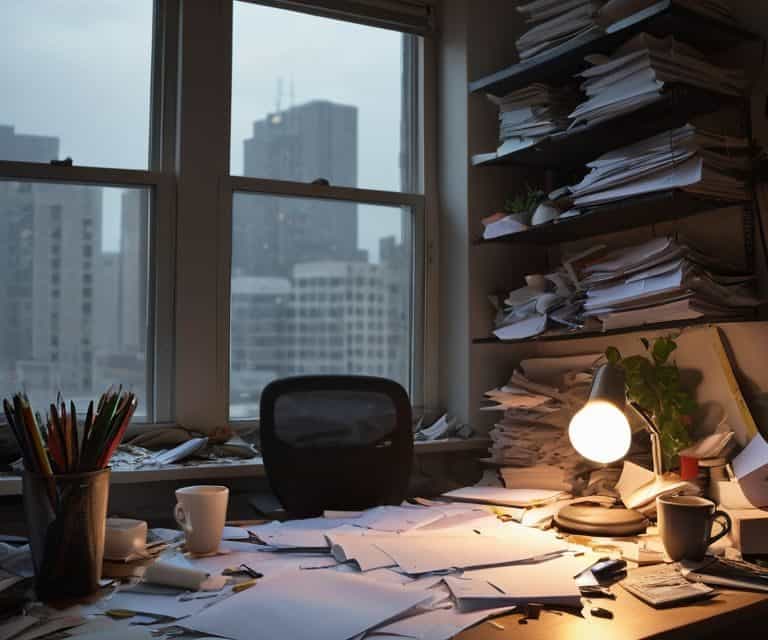I still remember the days when I thought burning out was just part of the creative package. You know, the typical signs of creator burnout: exhaustion, self-doubt, and a constant feeling of being stuck. But what really got my attention was when I hit rock bottom, realizing that I had lost sight of why I started creating in the first place. It’s funny how we’re often told to just “push through” or “hustle harder” when we’re experiencing signs of creator burnout, as if ignoring our well-being will somehow magically fix everything.
As someone who’s been in the trenches, I’m here to offer you a different perspective – one that’s rooted in my own experiences and lessons learned. In this article, I’ll share with you the raw truths about signs of creator burnout, and more importantly, what you can do to recognize and address them before it’s too late. My goal is to provide you with honest, actionable advice that will help you break free from the cycle of burnout and find a more sustainable way to create. No fluff, no clichés – just real talk and practical strategies to help you thrive as a creative.
Table of Contents
Burnout Signs

As I reflect on my own journey, I’ve come to realize that symptoms of creative exhaustion can be subtle, yet devastating. It starts with a lack of enthusiasm for projects that once sparked joy, and gradually escalates into a full-blown crisis of motivation. I’ve been there, and it’s a lonely, frustrating place to be. One of the most significant indicators that I was headed for burnout was my growing cynicism towards my work. I found myself questioning the value of my creations, and wondering if it was all worth the effort.
Another red flag is when managing stress becomes an all-consuming task. As creators, we’re often prone to overthinking and anxiety, but when these feelings become overwhelming, it’s a sign that something needs to change. I’ve learned that building resilience as an artist requires a delicate balance between pushing ourselves to grow, and knowing when to take a step back. By recognizing these patterns, we can begin to develop burnout prevention strategies that prioritize our well-being, and foster a healthier relationship with our work.
For me, the wake-up call came when I realized I’d lost sight of why I started creating in the first place. I was so focused on producing content, and meeting deadlines, that I’d forgotten the joy of bringing new ideas to life. It was a painful realization, but it forced me to re-evaluate my priorities, and make a conscious effort to overcome lack of motivation. By doing so, I’ve been able to cultivate a more sustainable approach to my work, and rediscover the passion that drives me as a creator.
Recognizing Cynicism and Lack of Motivation
When I look back at my own journey, I realize that cynicism was a major red flag. I started to question the purpose of my work and felt like I was just going through the motions. It’s a slippery slope, and before you know it, you’re doubting every idea and feeling like nothing is good enough.
I’ve learned that recognizing this shift in mindset is crucial. Lack of motivation can be a silent killer of creativity, causing you to feel stuck and uninspired. For me, it was about taking a step back, acknowledging my emotions, and reminding myself why I started creating in the first place.
Symptoms of Creative Exhaustion
When I think back to my own burnout, I realize that creative blockage was a major red flag. I’d stare at my laptop screen for hours, unable to come up with a single idea, feeling like I’d lost my spark. It was as if my mind had gone blank, and I was just going through the motions.
I’ve learned that emotional exhaustion is a common symptom of creative burnout. It’s that feeling of being completely drained, not just physically, but mentally and emotionally as well. You start to question your abilities, and even the things that brought you joy begin to feel like chores.
Preventing Burnout

To prevent burnout, it’s essential to manage stress as a creator by setting realistic goals and taking regular breaks. I’ve learned this the hard way, having experienced symptoms of creative exhaustion firsthand. By prioritizing self-care and making time for activities that bring me joy, I’ve been able to maintain my energy and motivation.
Recognizing cynicism in oneself is also crucial in preventing burnout. When I start to feel jaded or disconnected from my work, I know it’s time to take a step back and reassess my priorities. This might involve trying a new approach or seeking out fresh inspiration. By being mindful of my own lack of motivation and taking proactive steps to overcome it, I’ve been able to stay engaged and focused on my goals.
By building resilience as an artist, I’ve been able to navigate the ups and downs of my creative journey with greater ease. This involves developing a growth mindset, practicing self-compassion, and cultivating a support network of fellow creatives. By implementing these burnout prevention strategies, I’ve been able to maintain my physical and mental well-being, even in the face of challenges and setbacks.
Building Resilience as an Artist
As I reflect on my own journey, I realize that embracing self-care has been a game-changer in helping me cope with the pressures of being a creative. It’s not just about taking long baths or practicing yoga (although, let’s be real, those things are amazing too) – it’s about making intentional choices that nourish my mind, body, and soul.
By prioritizing my well-being, I’ve been able to build a stronger foundation for my work, allowing me to approach challenges with a clearer mind and a more positive attitude. This, in turn, has helped me develop a sense of resilience that I never thought possible, and it’s been a total lifesaver on those tough days when creativity just doesn’t seem to be flowing.
Managing Stress With Effective Strategies
To manage stress effectively, I’ve found that prioritizing self-care is crucial. This means taking time for activities that bring me joy and help me relax, such as going for a run or trying out a new recipe in the kitchen. By making self-care a non-negotiable part of my daily routine, I’m better equipped to handle the pressures of my work as a blogger and productivity coach.
When I’m feeling overwhelmed, I rely on time-blocking to regain control of my schedule. This involves dedicating specific periods of the day to focused work, breaks, and leisure activities, allowing me to maintain a healthy work-life balance and reduce stress.
5 Alarm Bells You're Heading for Creator Burnout
- Feeling like you’re constantly running on a hamster wheel, producing content without any real sense of fulfillment or joy
- Finding it impossible to silence your inner critic, no matter how many positive reviews or likes you get
- Noticing your creativity has stalled, and you’re just rehashing the same old ideas without any spark or innovation
- Experiencing physical symptoms like chronic fatigue, headaches, or insomnia that you just can’t shake off
- Starting to feel like you’re losing your sense of purpose and identity outside of your creative work, like you’re just a machine designed to produce
Key Takeaways to Beat Burnout
Prioritize self-care and recognize the early signs of burnout, such as creative exhaustion and cynicism, to prevent total meltdown
Building resilience as an artist requires a delicate balance between pushing your boundaries and respecting your limits, allowing for growth without sacrificing your well-being
Effective stress management is crucial, and this can be achieved by implementing practical strategies like time blocking, learning to say no, and scheduling unplugged weekends to recharge and refocus
A Hard Truth
Burnout isn’t just a sign of exhaustion, it’s a scream from your soul that you’ve been running on someone else’s expectations for far too long.
Jenna Sullivan
Breaking Free from Burnout

As we’ve explored the signs of creator burnout, it’s clear that recognizing the symptoms and taking proactive steps to prevent it are crucial for maintaining our creative spark. We’ve discussed symptoms of creative exhaustion, cynicism, and lack of motivation, as well as strategies for building resilience and managing stress. By acknowledging these factors and implementing effective coping mechanisms, we can break the cycle of burnout and cultivate a healthier, more sustainable approach to our work.
So, let’s make a conscious choice to prioritize our well-being and embrace a smarter way of working. By doing so, we’ll not only preserve our mental and physical health but also unlock our full creative potential, leading to a more fulfilling and inspired life. As we move forward, remember that taking care of yourself is not a luxury, but a necessity – and that with the right mindset and strategies, you can overcome burnout and achieve your goals without sacrificing your sanity or creativity.
Frequently Asked Questions
What are some common misconceptions about creator burnout that I might be mistaken about?
Honestly, one major misconception is that burnout only happens to those who aren’t passionate enough about their work – I’ve seen firsthand that it can hit even the most dedicated creatives. Another myth is that taking breaks is a sign of laziness, when in reality, it’s a necessary step to recharge and refocus.
How can I distinguish between normal stress and actual burnout in my creative work?
Honestly, it can be tough to tell the difference, but for me, it’s about persistence – normal stress will subside with rest and self-care, while burnout lingers, making it hard to find joy in your work, even after taking breaks.
Are there any specific signs of burnout that are unique to my profession as a writer/artist/designer?
Honestly, as a creative, you’re prone to unique burnout signs like self-doubt, perfectionism, and over-identification with your work. For writers, it might be writer’s block or feeling like you’re losing your voice. As an artist or designer, it could be creative stagnation or feeling pressured to constantly produce innovative work.
